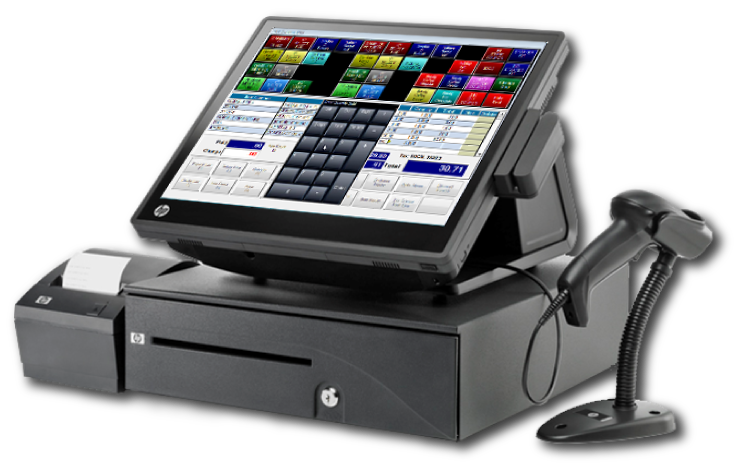Picture this: you’re at your favorite coffee shop, waiting to pay for your morning latte. As the barista swipes your card through the little machine, have you ever stopped to think about the wealth of information that’s being captured in that moment? That’s right – those point-of-sale (POS) systems are not just about processing transactions; they’re actually churning out valuable data that can help businesses make smarter decisions.
In this article, we’re going to delve into how POS system data is like a secret weapon for businesses, providing insights that can drive growth and success.
The Power of POS System Data
POS systems are not just transactional tools; they are invaluable sources of data that can be harnessed to gain a deeper understanding of customer preferences, purchasing patterns, and overall business performance. By capturing real-time sales data, inventory levels, and customer information, POS systems provide a wealth of information that can be used to drive strategic decision-making.
Customer Insights and Personalisation
One of the key ways in which POS system data contributes to business analytics is by providing valuable customer insights. By analysing transaction data, businesses can gain a comprehensive understanding of customer preferences, buying habits, and demographics. This information can be used to create targeted marketing campaigns, personalised promotions, and tailored product offerings, ultimately enhancing customer satisfaction and loyalty.
Sales Trends and Forecasting
Retail pos system data also plays a crucial role in identifying sales trends and forecasting future demand. By analysing historical sales data, businesses can identify seasonal patterns, popular products, and peak sales periods. This information is invaluable for inventory management, ensuring that businesses can optimize stock levels, minimise stockouts, and maximise sales opportunities.
Operational Efficiency and Performance Metrics
In addition to customer and sales insights, POS system data contributes to business analytics by providing valuable information on operational efficiency and performance metrics. By tracking key metrics such as transaction times, employee productivity, and sales performance, businesses can identify areas for improvement, streamline processes, and optimise resource allocation.
Harnessing POS System Data for Business Growth
Now that we’ve explored the valuable insights that POS system data can provide, let’s delve into how businesses can effectively harness this information to drive growth and success.
Data-Driven Decision Making
Businesses can make informed, data-driven decisions across all aspects of their operations using a POS system. Whether it’s identifying new market opportunities, optimizing pricing strategies, or refining product offerings, having access to accurate and comprehensive data is essential for making strategic decisions that drive business growth.
Predictive Analytics and Forecasting
POS system data can be used to power predictive analytics and forecasting models,
enabling businesses to anticipate future trends, customer behavior, and demand patterns. By leveraging advanced analytics tools, businesses can gain a competitive edge by proactively adapting to market changes and staying ahead of the curve.
Enhanced Customer Experience
Harnessing POS system data help businesses enhance the overall customer experience through personalised interactions, targeted promotions, and tailored product recommendations. By understanding customer preferences and purchasing habits, businesses can create a more personalised and engaging shopping experience, ultimately fostering greater customer loyalty and satisfaction.
Optimised Inventory Management
POS system data plays a critical role in optimising inventory management, ensuring that businesses can maintain optimal stock levels, minimise excess inventory, and reduce carrying costs. By analysing sales trends and demand patterns, businesses can make informed decisions about inventory replenishment, reducing the risk of stockouts and maximising sales opportunities.
Improved Operational Efficiency
POS system data can also be used to enhance operational efficiency by identifying bottlenecks, streamlining processes, and optimising resource allocation. By analyzing performance metrics and transaction data, businesses can identify opportunities to improve staff productivity, reduce wait times, and enhance overall operational performance.
Challenges and Considerations
While POS system data offers valuable insights for business analytics, there are certain challenges and considerations that businesses need to be mindful of. Data security and privacy concerns are paramount, and businesses must ensure that they have robust measures in place to protect sensitive customer information and transaction data.
Furthermore, businesses need to invest in the right technology and analytics capabilities to effectively harness and analyse POS system data. This may require training staff, implementing advanced analytics tools, and establishing processes for data interpretation and action.
Conclusion
Retail pos system data is a goldmine of valuable insights that can drive business analytics and contribute to overall business growth. By harnessing this data, businesses can gain a deeper understanding of customer behavior, sales trends, and operational efficiency, enabling them to make informed decisions and stay ahead of the competition.
As businesses continue to embrace digital transformation and data-driven decision-making, the role of POS system data in business analytics will only become more crucial. By leveraging this data effectively, businesses can unlock new opportunities, enhance customer experiences, and drive sustainable growth in an increasingly competitive marketplace.


